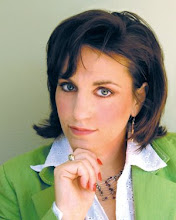Since the beginning of the year, I've been working with my friend and client, Karen Schumacher, on reintroducing her pure soy candles to the public. Defining a strategy, users, a new look--even a new name, Heirloom Candles--was fun and sexy and exciting, and we are SO PROUD of the outcome. It was a blast working on the redesign and messaging. Except...now we have to sell some luxury candles, in an economy that's pretty much tanked, using PR instead of advertising because there just isn't a budget for advertising.
Coming to the country life
Tuesday, November 11, 2008
It ain't sexy, but you've gotta do it
Monday, September 1, 2008
Safe in Body, Gustav Rocks Like a Hurricane
Right now, Hurricane Gustav is blowing Baton Rouge, Louisiana — my home town — to tatters. I've managed to get through to several important people either via phone or by text message: my mother and father, who watched as their next door neighbor's 70-foot oak tree smashed its owner's car and utility shed to smithereens; my brother on the other side of town, who said the storm wasn't nearly as big a deal as they'd thought (tell that to his wife, on lock-down at one of the city's largest hospitals); my friend Lynda Danos, who texted me that her family is blessedly alright in their home just outside of Lake Charles.
Saturday, August 9, 2008
Queens, Commercials and Underwear Essentials
Last post was June 11--wow. SOOO much has happened since then. It's been exciting, frustrating and exhausting, but hey--what else would I want? :)
Wednesday, June 11, 2008
Teaching Children Manners and Values
I belong to a service called Help a Reporter Out (HARO). Reporters from all over the place ask for sources for their stories. It's pretty interesting what comes across as far as inquiries go...
Wednesday, June 4, 2008
Creaky Screen Doors Let in Memories
Do some smells trigger in you an immediate connection to another time and place? One for me is always the first smell of burnt leaves in fall. Even after 30 years, that smell puts me smack in the middle of my front yard, 12 or 13 years old, living on Selfridge Air National Guard Base in Mt. Clemens, MI. I was probably raking the leaves in that big old yard — no wonder I have an attachment.
Networking with the FFA Kids
I got an unexpected but very welcome invitation last week. My friend Blane Marable, executive director of the Georgia FFA Alumni Association, asked if I would like to join his newly-installed state board members on a trip to Merial Pharmaceuticals in Duluth GA. Heck yeah! I'm always up for meeting new people, and getting to visit with FFA kids is always interesting.
Thursday, May 22, 2008
The Dichotomy of Blogging and American Agriculture
I was talking to my friend and teacher Leisa Rich the other day about the blog. I'm like a kid with a new toy, so I asked if she'd seen it since I'd given her a shout-out, and (thankfully) she had...but then she turned "that look" on me and said, "you know, Margaret, I'm just so OVER blogs. I'm blogged out." Quickly followed by assurances she didn't actually mean ME, of course, but you get the picture.
Saturday, May 17, 2008
On Cowboy Boots Made in China
 My grandmother, Alvis Fincher Austin of Klondike, Texas
My grandmother, Alvis Fincher Austin of Klondike, Texas
So I've had the itch for some time now to get myself some cowboy boots. Now, having said that, I first have to admit that for years, I mocked my older brother who lived in the country and adopted himself a rather country “way.” For instance, when we moved to Baton Rouge from Michigan back in 1979, he took me out for ice cream at Baskin Robbins, and horrified me when he asked “summa that PRAY-leens and CREE-yum” ice cream. Almost died. Let me explain. First, we sounded like the worst sort of pandering Yankee nitwits and our northern accents were so thick most folks couldn't understand us in Louisiana anyway, and Second--and this was probably the greater sin--south Louisiana folks call those damn things PRAH-lines, not PRAY-lines, for God's sake, and I, who just wanted to fade into the crowd and go unnoticed, knew he'd marked us as fakers the second we opened our mouths.
Friday, May 16, 2008
Mike Danna On the Myths & Facts of Ag
Well, since I mentioned Mike Danna in my blog, I thought I'd share with you an article he wrote about agriculture--the myths of the industry vs. the facts. Some interesting reading that may get you thinking tonight. Enjoy!
Thursday, May 15, 2008
Developing Creative Businesses Here in Georgia
Yesterday I went to an all-day workshop in Macon, GA on developing the creative economies of the state. The creative economies defined by the Georgia Tourism Foundation are slightly different from Richard Florida's famous "Rise of the Creative Class" creatives, who include researchers, scientists and the like. The GTF literally means CREATIVES -- dancers, photographers, painters, jewelry-makers, fiber artists and more.
Learn more about agriculture!
- Georgia Department of Agriculture--LOTS of cool info!
- Louisiana Farm Bureau
- The American Farm Bureau
- The American Farm Bureau Foundation for Agriculture
- the National Ag in the Classroom website
- the U.S. Department of Agriculture
- UGA College of Agriculture and Environmental Sciences--SO much interesting stuff here!
